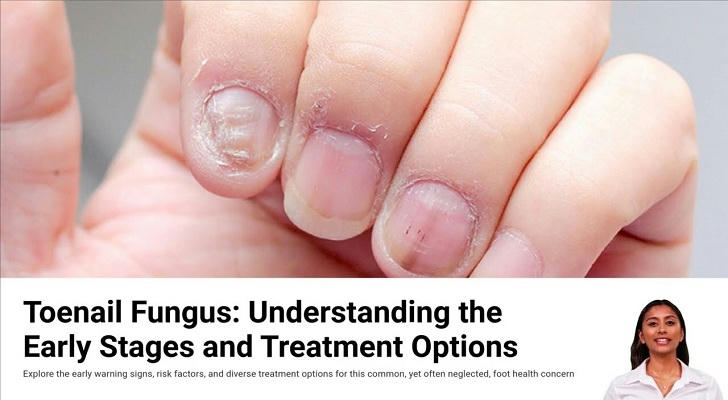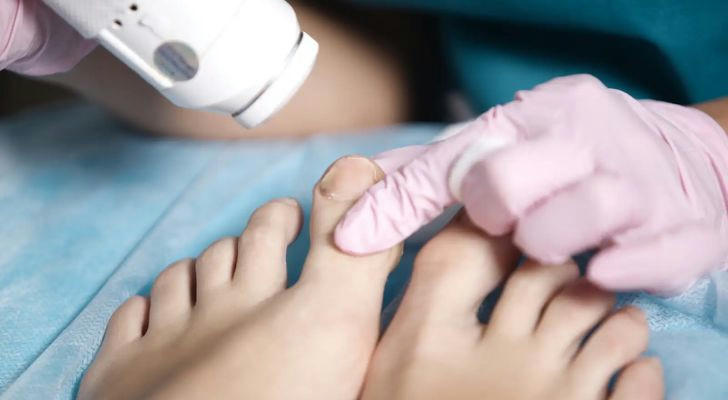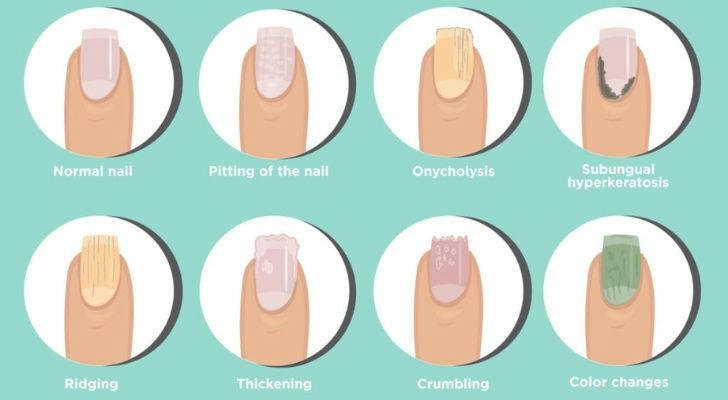Nail Fungus: Prevention and Early Signs
Nail fungus is more common than most people realize. It affects both fingernails and toenails but is especially frequent in toenails due to the dark, warm environment inside shoes. Although it may begin as a cosmetic concern, untreated fungal infections can progress and become harder to manage.
This article focuses on what nail fungus looks like in its early stages, what causes it, and how to reduce the risk of developing an infection.

What Is Nail Fungus?
Nail fungus, medically known as onychomycosis, is a fungal infection that occurs beneath the nail plate. It typically develops when fungi like dermatophytes, yeasts, or molds enter through tiny cuts in the skin or cracks in the nail.
Fungal organisms thrive in moist, warm environments — which is why sweaty feet, occlusive shoes, and public spaces like locker rooms and pools are common sources of exposure.
Early Signs of Nail Fungus
Recognizing the early symptoms of a fungal nail infection can make a significant difference in how manageable the condition becomes.
Common early signs include:
- Yellow or white spots under the tip of the nail
- Thickening or hardening of the nail surface
- Brittle or crumbly edges
- Slight lifting of the nail from the nail bed
- Mild odor or discoloration that worsens over time
If untreated, the nail may become darker, deformed, or detach from the nail bed. In some cases, the surrounding skin may become irritated or itchy.
Who Is at Risk?
Nail fungus can affect anyone but is more likely in individuals with:
- Tightly enclosed footwear habits
- Excessive sweating of feet or hands
- Frequent exposure to public showers or pools
- Nail trauma from tight shoes or injury
- Weakened immune systems
- Conditions like diabetes or poor circulation
The Journal of Fungi (2020) reports that onychomycosis affects about 10% of the general population and over 20% of individuals aged 60 and above.
How Nail Fungus Spreads
Fungal nail infections are contagious and may spread through:
- Direct contact with infected skin or nails
- Shared nail clippers, files, or towels
- Public surfaces such as gym floors or yoga mats
- Contact with soil or gardening without gloves
Spores are microscopic and can survive in environments that appear clean to the eye.
Daily Habits to Help Prevent Nail Fungus
Consistent hygiene practices reduce the likelihood of fungal infections and support stronger, healthier nails.
1. Keep Nails Clean and Dry
Moisture promotes fungal growth. After any activity involving water or sweat, dry hands and feet thoroughly, especially between the toes.
2. Trim Nails Straight Across
Trimmed nails are less likely to break or lift. Cutting straight across prevents ingrown nails and minimizes entry points for fungi.
3. Choose Breathable Footwear
Select shoes made of breathable materials such as mesh, leather, or canvas. Rotate shoes daily and wear moisture-wicking socks when active.
4. Wear Footwear in Public Areas
Always wear sandals or flip-flops in public restrooms, locker rooms, hotel showers, or pool areas.
5. Disinfect Nail Tools
After each use, clean tools with soap and water, followed by disinfection with isopropyl alcohol. Avoid sharing personal grooming items.
6. Take Breaks From Nail Polish
Nail polish can trap moisture or fungus underneath. Periodically leaving nails unpainted helps identify any early signs of infection.
When to See a Healthcare Provider
If symptoms like discoloration, thickening, or crumbling persist for several weeks — or if the condition worsens — medical evaluation is advised.

Treatment options may include:
- Topical antifungal medications
- Oral antifungal prescriptions
- Nail debridement or trimming by a professional
Early intervention often results in better outcomes and shorter treatment durations.
Nail Salon Tips for Fungus Prevention
Salons should follow strict sanitation practices to prevent cross-contamination.
Safe salon tips:
- Choose salons that use medical-grade tool sterilization (e.g., autoclaves)
- Bring personal tools when possible
- Avoid services on broken skin or visibly affected nails
- Ensure foot baths are properly cleaned between clients
Regulations differ by state, but cleanliness and visible disinfection are essential markers of a professional salon.
Myths About Nail Fungus
“Only dirty feet get fungus.”
False. Even clean feet can develop fungus if the environment allows spores to thrive.
“It’s just a cosmetic issue.”
Not true. Nail fungus can become painful and may spread to other nails or the skin.
“It will go away on its own.”
Most fungal infections persist without treatment and may worsen over time.
Conclusion
Nail fungus can be prevented through simple habits: keeping feet clean and dry, trimming nails properly, disinfecting tools, and protecting feet in public spaces. Early signs like color changes or nail thickening should not be ignored, as early action is more effective and less invasive.
Staying aware of nail changes and prioritizing hygiene helps maintain both the health and appearance of nails long term.

References:
- Journal of Fungi, 2020. Onychomycosis: Prevalence and Risk Factors
- Centers for Disease Control and Prevention (CDC).
- American Academy of Dermatology Association.
